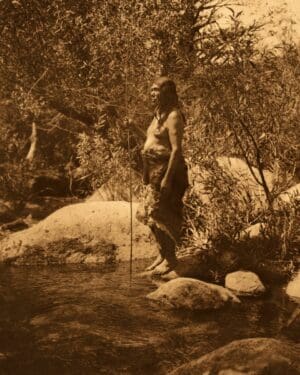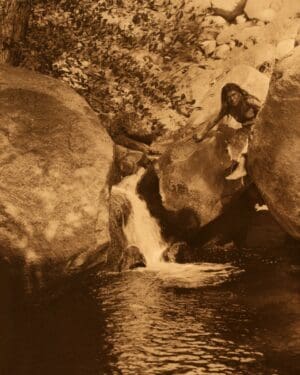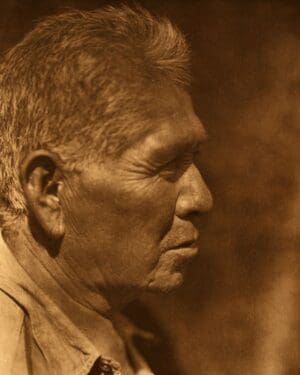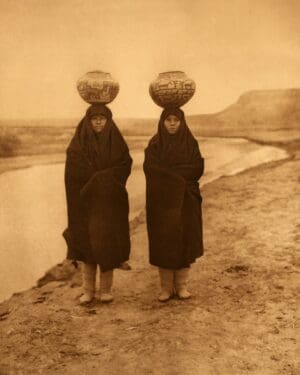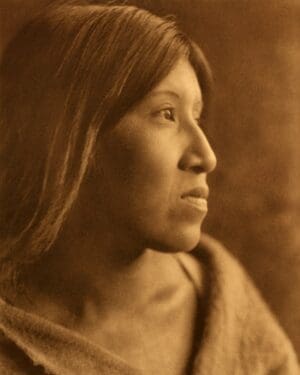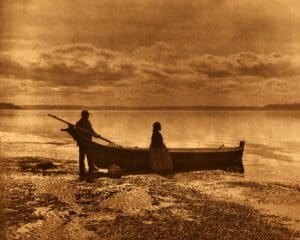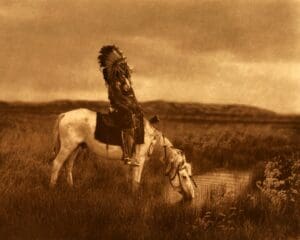Miwok Native Americans
Miwok Indian Photos by Edward S. Curtis
Tribal Summary
Dress
Miwok men ordinarily wore only a deerskin loin-cloth, and women either a knee-length double apron of fringed deerskin or a simple loin-cloth like that of the men. Both sexes used, when necessary, deerskin moccasins with short leggings attached, and robes of deer-fur or woven rabbit-skins, An occasional winter garment was a poncho of three deerskins sewn together.
Both men and women wore the hair hanging loose without parting, or tied in a bunch at the back of the head, and had the chin tattooed, usually with three vertical lines. Some, especially women, had the chest and the shoulders tattooed, a favorite design including a long line from the lower lip to the abdomen. Some men and more women wore slender, perforated cylinders of clam-shell in the lobes of the ears and the septum of the nose, and a more common ear-plug was a wooden cylinder with quail crest-feathers radiating from the outer end.
Dwelling
The Miwok winter house was a conical frame of poles cove red with grass or with bark. The enclosed space was excavated. The door, always facing eastward, was protected by a pent-roof. The sudatory was of the type commonly found in northern and central California, semi-subterranean, with an approximately conical roof of grass and earth. An earth-covered assembly house capable of holding as many as a hundred people was found in each considerable village.
Food
Acorns and other nuts, pinole, and various roots and fruits were of importance to the Miwok. Like their neighbors they rejected scarcely any form of animal life,and though their country abounded in deer, elk, and antelope, the largest part of their meat diet was furnished by jack-rabbits. Fish were taken by gorge-hook and spear, in wicker traps, and by narcotization.
Showing all 4 results

